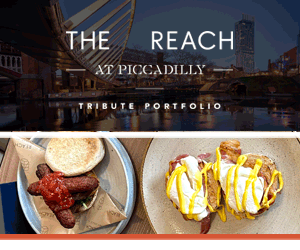Jonathan Schofield starts the epic tale of Manchester architecture
FEAST or famine.
Or rather famine then feast.
Isolated behind the Pennine hills from the main North-South communication routes, Manchester and Lancashire took a long time to jump aboard the rollercoaster of architectural fashion but, when it did, it leapt with a vengeance.
That would come later so, to begin with, aside from some bits and pieces of prehistoric stonework and some vestigial Roman ruins, a few Norman traces (such as a re-positioned arch in Middleton parish church), there’s little to show until well after the Norman Conquest.
In most of these early buildings it’s hard to discern the ego of an architect
Things speed up in the 1300s and 1400s. There’s a lot of work remaining from the Perpendicular style of English Gothic architecture – that national passion for the vertical line. Gothic architecture is all about pointed arches, vaulting and tracery in windows. The Gothic style will become something of a Manchester obsession in the nineteenth century which is explored subsequently in this series. There’s more about Manchester Gothic here.
Original Gothic work can be found in numbers of churches but most importantly in Manchester Cathedral which also provides gorgeous late-medieval wood-work. The Cathedral quire is a superb example of the best in Gothic art nationally. The recent close-up photography high in the ceiling by Robert Watson has revealed many more sublime elements of the Gothic. The face of Christ is remarkable and should have greater recognition for the compassion and suffering the artist conveyed. Other churches with excellent medieval elements in the region include the parish churches at Ashton, Eccles, Middleton, Rochdale, Stockport and Wigan. Several rare timber churches remain in the region too, such as St Lawrence in Denton.
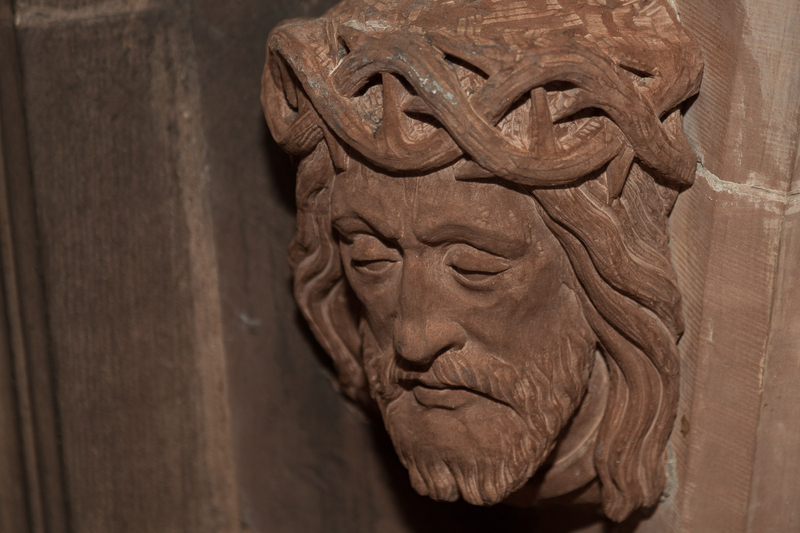
Given that churches were often altered, perhaps the most evocative buildings from this period are the manor houses; places such as Ordsall Hall, Bramall Hall, Clayton Hall, Wythenshawe Hall and Baguley Hall with their timber frames. The great hall of Ordsall with its long vertical spere trusses is definitely worth seeking out. Ordsall is an exemplar of how to look after these ancient properties both inside and outside.
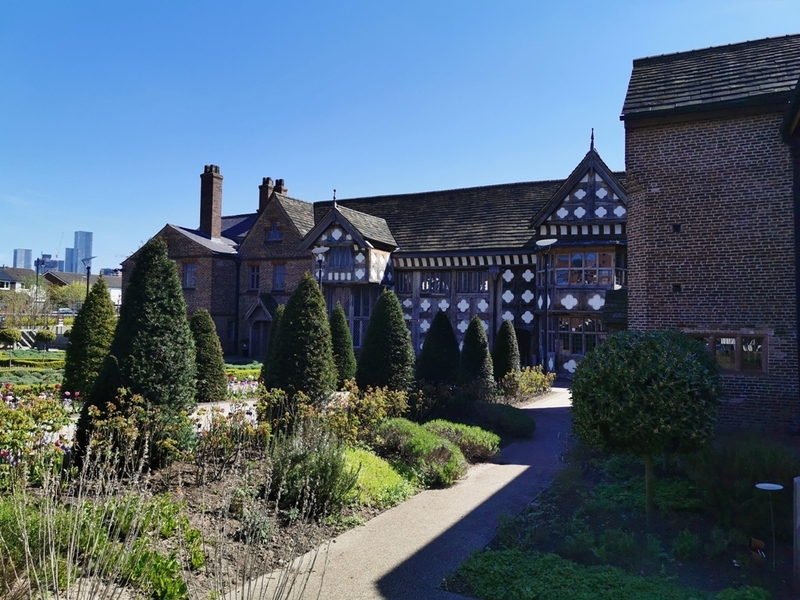
Secular stone buildings start to appear at this time such as Chetham’s School of Music and Library from 1421 in the city centre. This was built originally as a college of priests. The stone used was the local Collyhurst sandstone, rare in today’s city as the acid rain of the Industrial Revolution rotted it away. Chetham’s is the best survival of its type and date in the country and is a must visit in Manchester. It is a building which sums up all the charm of antiquity.
Brick, which will become a dominant building material in the region, makes a grand entry on to the scene with Hough End Hall in 1596 in Chorlton. This is the finest brick building in the North West of the period, commissioned by local bigwig Sir Nicholas Mosley when he was also Lord Mayor of London. It has been disgracefully treated for decades - both internally, externally and with the town planning around it. It should be the Chorlton tourist attraction but is miles off being on anybody's itinerary. As prosperity in the region rose, sturdy stone houses appear on the fringes of the region too; particularly in the Pennine areas, such as Hey House (1616), Holcombe, Bury, and Clegg Hall (possibly 1618), Milnrow, Rochdale.
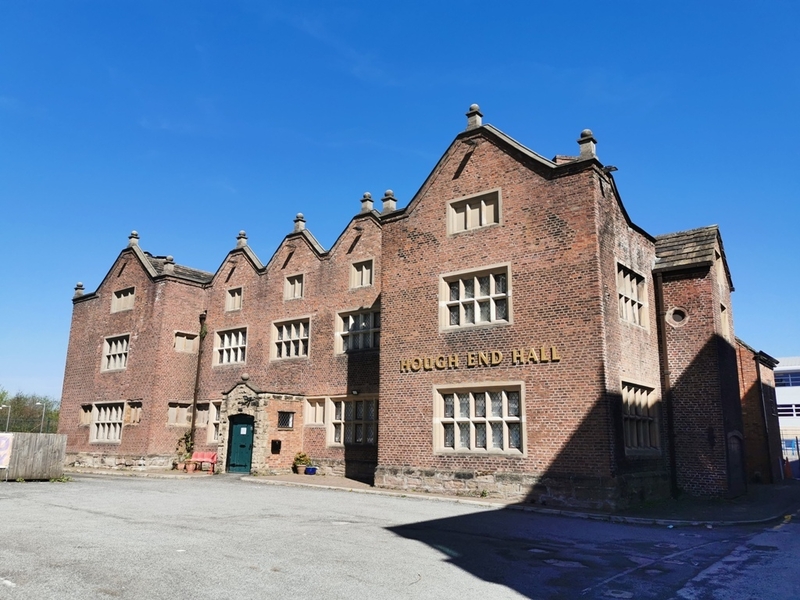
Thus far in the built history of Greater Manchester all of the work away from the churches had been unburdened by much in the way of a style (in other words a particular regime of building such as Gothic or Classical). Hough End in its plan and Clegg Hall with dinky Classically inspired columns in the porch show this is starting to change. Previously secular buildings were simply places built to fit the local climate in practical ways.
In most of these buildings, especially Manchester's best early building Chetham's, it’s hard to discern the ego of an architect. In fact we almost never know the architect’s name – architects were generally called master masons and doubled up as civil engineers. They were not part of a rarefied profession. The result is the early buildings are almost organic structures that appear to have almost grown out of the ground.
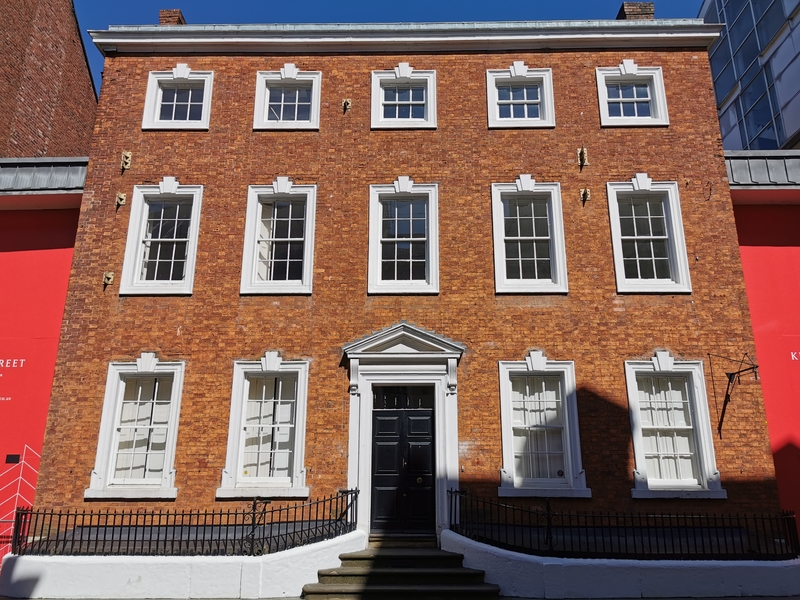
In the 1600s and the 1700s new fashions and new ideas start to impact on the North West. In particular the Renaissance obsession with ancient Rome and Greece begins to influence design, so when Lady Ann Bland pays for St Ann’s Church (consecrated 1712) it’s radically different from any prior Manchester church. The building is Classical in inspiration, with Roman temple-like elements, a grand portico supported by Corinthian columns and rich pilasters along the walls. We have a name for the architect too, John Barker.
The fabulous Casson & Berry maps of the mid-eighteenth century reveal how long demolished town houses were designed to the new ideas. These are almost palace-like structures speaking of growing wealth and aspiration. It’s a crying shame none of the really big houses have survived in the city centre. The best remaining ‘townhouse’ of the period is on 35 King Street, latterly Jack Wills shop and now vacant. This was built for Dr Peter Waring and dates from 1736.
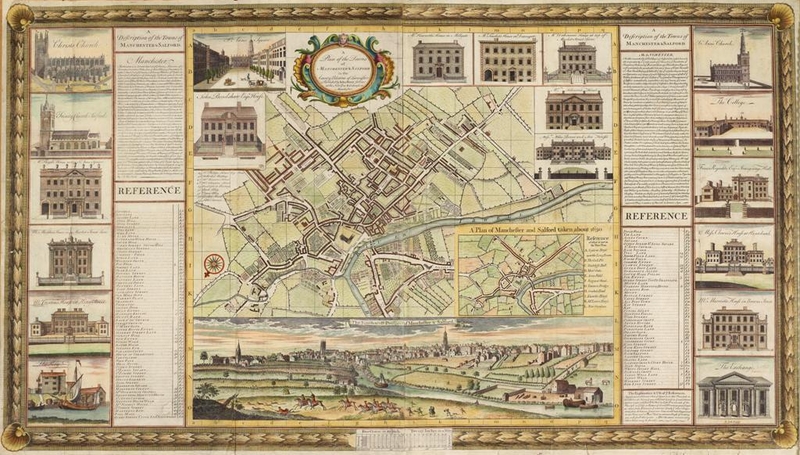
The Italian Renaissance architect Andrea Palladio is the influence here, via Inigo Jones, who adapted ‘Palladian’ designs for Britain. The hallmark of Palladio is balance and poise and the King Street house has exactly those qualities. Georgian terraces have rarely survived in Manchester, unlike in Liverpool or Bath. St John Street in the city centre is a decent example which, after more than 150 years of occupation by doctors surgeries and lawyers chambers, is now returning to domestic use. Round the corner from St John Street is another one-off Georgian town house survival, Cobden Chambers (1770) on Quay Street, a very large residence with good surviving interiors.
Platt Hall, Platt Fields Park, is another elegantly proportioned house from the eighteenth century in the Palladian style. Alkrington Hall in Middleton is worth a look too but Manchester’s absolute gem of the period is Heaton Hall in Heaton Park (1772-8) by maverick architect James Wyatt, who with the owner Sir Thomas Egerton, came up with an original design that moves away from the strict Palladian to something more liberated almost pointing to the Romantic movement in art.
The interiors are masterful. Beautiful. The Cupola Room is the most exquisite space in the house, and was charmingly designed as the Dowager Lady Egerton’s dressing room and boudoir. The enfilade of rooms on the ground floor moves from the dining room, doors all aligned across four grand spaces to the Samuel Green organ in the music room. The exterior of the house is a model of restrained elegance yet it carries pomp and display as well.
Heaton Hall, the former home of the Earls of Wilton, was described by the late guru of architectural criticism, Nikolaus Pevsner, as ‘the finest building of its period in Lancashire and one of the finest in the country.’ It is not at present open on a regular basis to the public, due to budget issues although there are open days by the dedicated and lovely Friends of Heaton Hall and tours from this writer.
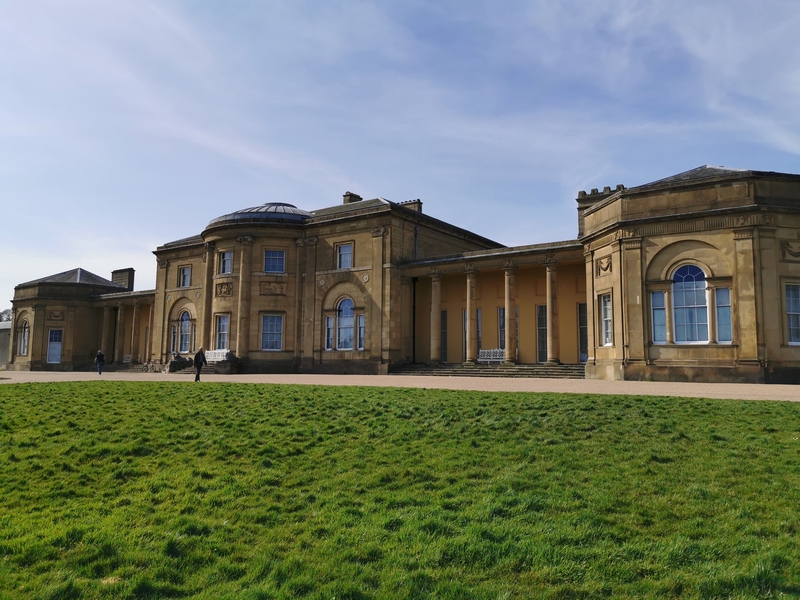
Let’s finish with the workers.
The world was changing at the end of the eighteenth century as the Industrial Revolution erupted. Yet, before the huge steam-powered mills transformed the Greater Manchester scene utterly, the region, and much of the Pennine North of the country, developed its own specialist building.
The typical weaver's house is a unique North of England building type. Fortunately large numbers of these survive, instantly recognisable by their long rows of windows on the second floor to allow light into a room which was a workshop. These structures are the earliest surviving buildings of the humble to survive in the region.
For that fact alone they are tremendously important, but these handloom weavers' properties are important politically. The self-employed workers who lived and worked in these properties were about the first of their class to demand greater human rights with anything approaching effective organisation. It is no coincidence that the crowd protesting at Peterloo in 1819 was largely composed of handloom weavers demanding the vote and representation in Parliament.
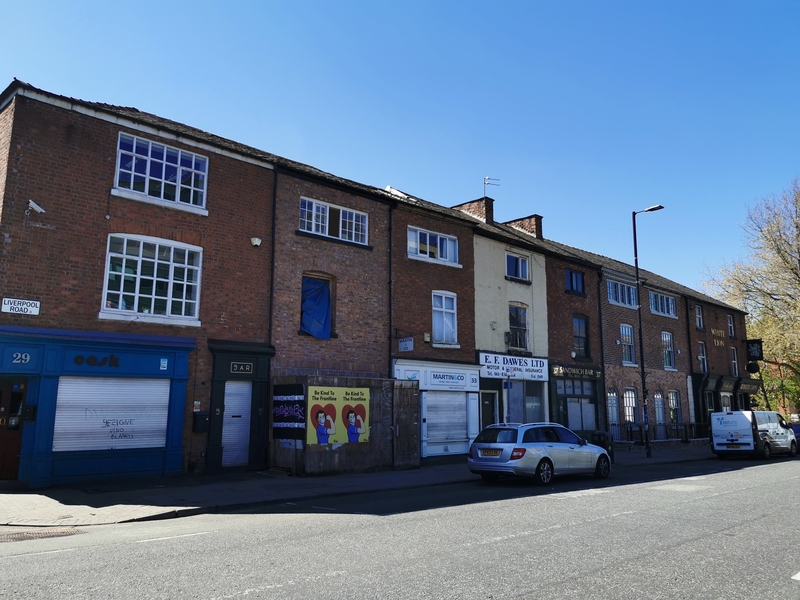
The Pennine fringes of Greater Manchester make an especially happy hunting ground for weavers houses, but there are plenty of these buildings in the city centre. The Grey Horse pub on Portland Street is typical, with the distinctive second floor windows maximising light for the intricate labour of weaving or spinning. There’s a row on Liverpool Road too, several with the second floor workshop windows, and again, as with the posher houses round the corner on St John Street, they are being converted back into real homes.
These modest buildings show that a change was being visited upon the region. As stated above, the mechanised industrialised world was knocking hard on the door. Up until the late 1700s life had continued for most classes of society pretty much as it had for hundreds of years previously. Time was being called for all that.
This archive article has been comprehensively rewritten.
Jonathan Schofield conducts award-winning tours and you can get vouchers for these here.
Read more:
The Manchester ship: The Guardian is plain wrong
Elegant and important new heritage holiday home for Manchester
House of Books and Friends
Get the latest news to your inbox
Get the latest food & drink news and exclusive offers by email by signing up to our mailing list. This is one of the ways that Confidentials remains free to our readers and by signing up you help support our high quality, impartial and knowledgable writers. Thank you!







